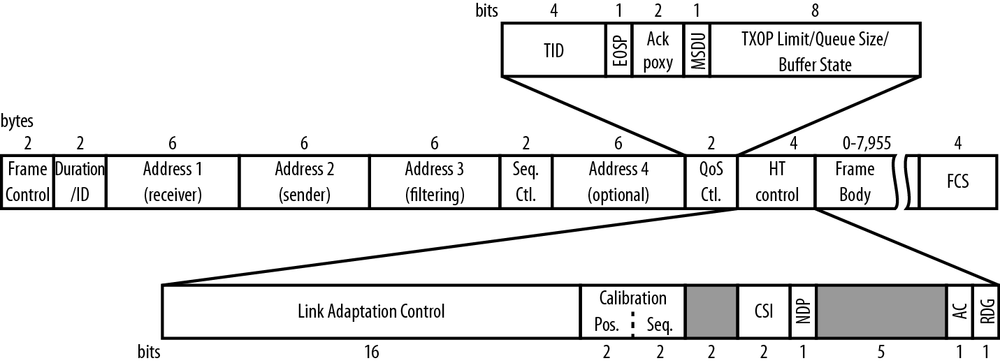Chapter 5. MAC Basics
We must, indeed, all hang together, or most assuredly we shall all hang separately.
802.11n made several modifications to the MAC layer to improve efficiency. Just as jumbo frames on Ethernet improve efficiency by increasing the “timeslice” of medium usage devoted to transferring data, larger frames in 802.11n do the same. However, unlike Ethernet, frames in 802.11 must be acknowledged. When several frames are clustered together in an aggregate container, sending single positive acknowledgments for each would give back many of the efficiency gains. Therefore, 802.11n devices make extensive use of block acknowledgments to improve the efficiency of the required positive acknowledgment process; 802.11n receivers can selectively acknowledge the individual constituent frames inside an aggregate.
Frame Changes
The 802.11 data frame is only slightly changed by 802.11n. Figure 5-1 shows the format of an 802.11 Data frame as modified by 802.11n. The major changes from the traditional 802.11n Data frame are the increase in size, the addition of the optional HT Control subfield, and the fact that the QoS Control field is utilized extensively in block acknowledgment. The payload of the MAC is increased about fourfold, which can be used to aggregate higher-layer frames together for efficiency.

Figure 5-1. Revised format of MAC frame
Management frames signal that ...
Get 802.11n: A Survival Guide now with the O’Reilly learning platform.
O’Reilly members experience books, live events, courses curated by job role, and more from O’Reilly and nearly 200 top publishers.

